CLASSICAL CONCERT -SERIES-



,
Welcome to The Sharon® L. Morse Performing Arts Center!
Much like the building’s namesake, my grandmother, Sharon L. Morse, we love all varieties of the performing arts here. It is in her memory that I, along with my amazing team of artists and arts administrators, strive to bring many different types of the highest quality entertainment here to The Sharon.
Since opening in 2015, we have strived to establish your trust, that a show at The Sharon is a show worth seeing. Perhaps you find yourself here today to see a concert of one of your favorite musicians, or to take in the national tour of a Broadway show. Either way, we encourage you to consider trying out a new show that perhaps you haven’t heard of before, knowing that it has been intentionally curated by our team.
We welcome you to The Sharon: a place for you to see an old favorite, but also a place to discover your new favorite. I sincerely hope you enjoy the show today, and I look forward to seeing you here again soon!
See
You at The Sharon,
W hitney Morse Artistic DirectorThe Hebrides Overture, op. 26
Mendelssohn completed the first draft of his Hebrides Overture in Rome, toward the end of 1830. He was unhappy with his first attempt and continued to revise the work for the next three years. Of particular distress to Mendelssohn was the middle section about which he said, “The forte, D Major middle section is very silly and the entire so-called development tastes more of counterpoint than of whale oil, seagulls and salted cod.” Whale oil notwithstanding, the work premiered on May 14, 1832, by the London Philharmonic Orchestra. Mendelssohn was still not happy with the work, and revised it further until it was finally published in 1833. The two titles (Hebrides and Fingal’s Cave) provide an interesting dilemma – it is believed that a publisher added the Fingal’s Cave title, thinking it would be a more recognizable name than The Hebrides. Further complicating matters, it seems the score and orchestral parts contain differing names, some indicating Fingal and some Hebrides. Mendelssohn’s work was a new type of overture which emerged during the nineteenth-century, referred to as the concert overture. Concert overtures are not drawn from a stage work or opera, but rather, are stand-alone works to be programmed as an overture in a concert hall. Other composers of famous concert overtures include Berlioz, Tchaikovsky, and Brahms.
Mendelssohn’s Hebrides Overture is not programmatic, in the sense that it does not follow a narrative or tell a story; but it is thoroughly evocative of the sea and the scenery Mendelssohn experienced during his time in the Hebrides and Fingal’s Cave. The opening motive that Mendelssohn sketched and sent to his sister after viewing the Hebrides, is a mysterious, arpeggiated fragment outlining the key of b minor. The motive is repeated several times, rising higher and higher. It begins in the lower depths of the orchestra for maximum drama, with the bassoon, viola, and cello receiving the melodic material. As the theme rises, the violins take over, while the lower voices begin an undulating pattern of sixteenth notes that is present throughout most of the work, representing the ebb and flow of the sea, while dramatic crescendos and sforzandi allude to crashing sea waves upon rocks. The second theme is a more sprawling and soaring melody in the major mode, and as the always quotable Sir Donald Francis Tovey stated, is “the greatest melody
Mendelssohn ever wrote.” This second theme is again introduced by the lower instruments (bassoons and celli), maintaining the mysterious nautical tone of the overture. The opening motive is later transformed to a martial rhythm in the orchestra before beginning a somewhat jauntier section filled with dotted rhythms and staccato statements. This section begins with very soft iterations of the opening fragment answered by militaristic figures from the winds. It then modifies and truncates the opening motive into short staccato statements passed throughout the orchestra before the clarinet returns the peaceful ambiance with its statement of the expansive second theme, leading directly into the extended coda. The work ends with a repeated, haunting statement of the opening motive in the clarinet, passed onto the flute that has the last word with its ascending b minor arpeggio, accompanied by pizzicato strings.
Felix Mendelssohn
Mendelssohn’s Violin Concerto in E minor, Op. 64
Mendelssohn’s violin concerto was the first in a distinguished series of Romantic era violin concertos written by pianist-composers with the assistance of eminent violinists (others being by Schumann, Brahms, Bruch, Tchaikovsky, and Dvořák). Mendelssohn was too ill to attend the successful premiere on March 13, 1845, which was conducted by Niels W. Gade (1817 – 1890) and featured violinist Ferdinand David as the soloist. However, Mendelssohn did have the opportunity to conduct his violin concerto with his dear friend as soloist, on October 23, 1845.
From the beginning of the collaboration between violinist Ferdinand David and Mendelssohn had agreed that this concerto should not be a vehicle for empty showmanship. With this guideline, the outcome was a serious, exquisite, and elegant essay in the romantic concerto genre, ultimately ranking among the finest violin concerti written in the nineteenth century. The concerto is written in classical poise but melodic suavity and refined romantic feeling. Simply put, it is the epitome of Mendelssohn’s compositional style. When the concerto was ready to be premiered, David anticipated it would be well-received by the community, commenting to Mendelssohn, “This is going to be something great! There is plenty of music for violin and orchestra, but there has only been one big, truly great concerto [Beethoven] and now there will be two!” Mendelssohn instantly retorted, “I am not competing with Beethoven.”
The Mendelssohn violin concerto bears no resemblance to the Beethoven violin concerto. Its three movements are played without pause. Additionally, the concerto completely discards the usual orchestral introductory exposition. Instead, a soft murmuring of the strings commences the concerto with the solo violin entering seven beats later. The violin solo melody is soaring and restless, and it only intensifies as it develops. What also makes this concerto unique for the time is that Mendelssohn’s
development of the work provides a structural surprise. Mendelssohn moves the cadenza (a long and virtuosic violin solo) from its traditional place at the end of the first movement to a new location at the end of the development. The recapitulation following the cadenza enters from the orchestra with the soloist continuing an arpeggiated figure derived from the cadenza. The solo violin is clearly collaborating melodically with the orchestra rather than seizing the stage (typical of a violin concerto), revealing one of the concerto’s features of interlocking partnership between the two forces of the solo violin and orchestra. As the first movement fades into the background, a solo bassoon, holding one note from a cadential chord, bridges us immediately into the second movement. The second movement offers a tender theme sung by the soloist as its main subject. However, even here Mendelssohn surprises us with a middle section spinning a minor tune over bustling metric-like harmonic notes providing significant contrast to the opening calm and serene motif. With the shortest of pauses, the final movement is preceded by a recalling of the opening theme of the concerto refreshed by new accompaniment. These fourteen bars of transitional material bridge us to the concluding brilliant finale. Commenced by the brass, the soloist answers with lightly scampering arpeggios in the most playful of styles. It is this that is quintessential Mendelssohn. A new, bright theme from the violin dances over a light accompaniment from the orchestra. Echoes of Mendelssohn’s popular work A Midsummer Night’s Dream are artfully referenced in the orchestration, eventually leading to a continued collaboration with the solo violin and orchestra until a dazzling conclusion.
In 1906, one year before his death, the eminent violinist Joseph Joachim (who assisted Brahms on his violin concerto) responded to a toast at his 75th birthday party by stating that, “The Germans have four violin concertos. The greatest, most uncompromising is Beethoven's. The one by Brahms vies with it in seriousness. The richest, the most seductive, was written by Max Bruch. But the most inward, the heart's jewel, is Mendelssohn's.”
Mendelssohn draft initial sketches of his “Scottish Symphony” during his tour of Italy.
However, Mendelssohn subsequently set the work aside and may have returned to the first movement only in the 1830s. Seemingly, he found it difficult to recreate his “Scotch mood,” which only struck him once again in 1841.
Finally, the symphony was completed in Berlin on 20 January 1842, the last of his five symphonies but carrying the designation as Symphony No. 3. Dedicated to the young Queen Victoria, it was first performed in the Leipzig Gewandhaus on 3 March 1842, and repeated in London in the same year to an audience that included the Queen. The connection to Scotland became only known after the
composer’s death, The score is prefaced by a note asking that the movements not be separated by the customary pauses, and the composer goes on to suggest that their sequence be indicated in the program as follows:
Introduction and Allegro agitato—Scherzo assai vivace— Adagio cantabile—Allegro guerriero and Finale maestoso. The introduction begins solemnly. Mendelssohn has refined his 1829 sketch, coming up with a more interesting rhythm in the first measure and a less flaccid turn of melody a little later. This hymnlike opening gives way to an impassioned recitation for the violins, and it is from this passage that the rest of the Andante takes its cue. The music subsides into silence, and after a moment the Allegro begins, its agitato quality set into higher relief by the pianissimo that Mendelssohn maintains through twenty-one measures. The Scotch is very much a pianissimosymphony. The scoring tends to be dense and dark in a manner that we, certain of the symphony’s title, are much inclined to interpret as Northern and peaty. At the first fortissimo, the tempo is pushed up to Assai animato, which is in fact the base speed for the remainder of the movement.
As always, Mendelssohn handles the entrance into the recapitulation captivatingly: as the moment of return approaches, cellos start to sing a new melody in notes much slower than the skipping staccato eighths in the strings and woodwinds, set in delicate piano against the surrounding pianissimo, and when the first theme returns, it is as a counterpoint against the continuing cello song. The coda brings one of those diminished-seventh-chord tempests that Romantic composers were so fond of. Once again the music subsides—very beautifully—and a breath of the introduction brings the first movement to a close. The scherzo emerges from this with buzzing sixteenth-notes and distant horn calls (on all sorts of instruments). In spite of Mendelssohn’s irritations in the summer of 1829, the flavor of the tunes is distinctly Scots. The Adagio alternates a sentimentdrenched melody with stern episodes of march character. The fiercely energetic fourth movement again seems very Scots indeed, and every bit as macho and athletic as Mendelssohn’s guerriero promises. He invents yet another of his magical pianissimos, this time to emerge into a noble song, scored in surprisingly dark and muted hues for such a peroration: he remarks somewhere that it should suggest a men’s chorus.
Thank you to Ms. Margaret Dick for her generous gift of sponsorship for the January concert.
Pasquale Valerio is the creator, nurturer, mentor, and guiding light for The Villages® Philharmonic Orchestra and Chorale. Pasquale was born in Naples, Italy and began his music studies at the age of 9. He began studying Trumpet Performance at The N. Puccinni Conservatory of Music graduating in 1985. His studies were not limited to trumpet, but included Applied Complementary Piano Studies, Harmony, and Lectures from Maestro Filippo Veniero, who was his guide and mentor from 1967 to 1989. His adult musical career began during his national service as a member of the Carabinieri (Italian Military Police). Fortunately for his musical development, most of this was with the Band. After his discharge, he began studying conducting. Pasquale Valerio served as an apprentice under Sir Antonio Pappano for 6 years. Pasquale followed him all around the world from 2006-2011 and learned directly from the Conductor of the Royal Opera House in London. To that end, Pasquale believes fully in the magic of education through music, and that children are never too young to start discovering to power of harmony.
In 1996, Pasquale relocated to the United States continuing his conducting studies with J. Whitney and Günter Schmidt. In 2004, he became the Founder and Music Director of The Villages Philharmonic Orchestra where he continues to serve today. Maestro Valerio was also the founder of Lake Sumter Chamber Orchestra as well as co-founder and conductor of The Florida Lakes Symphony from 20052006. Pasquale has been regularly invited as a guest conductor at the Orchestra Filarmonica 900', Teatro Regio, and the Viotti International Music Festival.
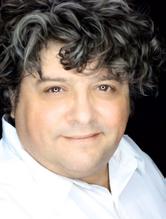
Young Italian violinist, Fabrizio Falasca, has been called “a great talented violinist with a sound extraordinarily beautiful and powerful, a very brilliant technique as well as an amazing intonation, high maturity of interpretation and musical expression”.

Born in 1988 he began his study of violin young, showing an extraordinary music talent, and going on to win numerous national and international music competitions, among which in September 2010 he was awarded at the famous 29th Biennal Violin Competition "Città di Vittorio Veneto" where he was considered by critics "an exceptional talent with a great stylistic and musical maturity" and in 2013 he was a prizewinner at the “A.Postacchini” International Violin Competition. He is considered by Salvatore Accardo as one of the most representative Italian violinists of his generation.
He has performed as soloist in prestigious music festivals and seasons such as Ravello Festival, San Carlo Theatre of Naples chamber music season, Theatre G.Verdi chamber and concert seasons in Salerno, Festival of the two worlds of Spoleto, Cremona Festival, Musical Union of Turin in Italy, Vanersborg Varfestival in Sweden, Estoril in Portugal, KasselFestival in Germany, Montecarlo in France, Gulangyu Festival in China, Evmelia Festival in Greece performing in important concert halls like San Carlo Theatre in Naples, Theatre G.Verdi of Salerno, Theatre Alighieri of Ravenna, Vittoria Theatre of Turin, Seraphicum Auditorium of Rome, Auditorium Sra Boa Nova of Estoril, Salle Garnier of Montecarlo, Shanghai Symphony hall, Auditorium Neyemair of Ravello, Kongress Palaice of Kassel, Caio Melisso Theatre of Spoleto, Gulangyu concert hall, Vahdat hall in Teheran, Musikverein Brahms saal in Vienna and many others.
He performs regularly in solo and chamber recitals, playing with musicians such as S.Accardo, F. Petracchi, D. Waskiewitcz, L. Piovano, A. Pompa-Baldi, T. Atschba, S. Redaelli, S.Kang and many others. He has also recorded chamber works for Vatican Radio and RAI and going to record for Cpo and Centaur Records.
He has performed as soloist with orchestras such as Orchestra di Padova e del Veneto, Campania Chamber Orchestra, Chamber Italian Orchestra (OCI, the prestigious orchestra of Salvatore Accardo), Philarmonic Orchestra G.Verdi of Salerno, Chamber Orchestra of San Carlo Theatre, Italian Younger Orchestra(OGI), World Youth Orchestra, Cascais and Oeiras Chamber Orchestra, Teheran Symphonic Orchestra under the conducting of Hansalich Samale, C. Goldstein, F.I.Ciampa, D. Giuranna and many others.
He was invited several times by Daniel Oren as soloist at the G.Verdi Theatre in Salerno receiving always great acclaim from audience and critics.
Fabrizio cooperate regularly as co-leader and concertmaster with Philharmonia Orchestra in London, He is also guest concertmaster of the Philarmonic Orchestra G.Verdi of Salerno, and he is regularly invited by Gustav Kuhn as soloist and concertmaster of the Tiroler Festspiele Orchestra in Erl, Austria.
Fabrizio graduated from the G.Martucci Conservatorie of Salerno with top marks, honors and special mention and continued his studies with S.Accardo at the W.Stauffer Academy in Cremona and Chigiana Academy in Siena, with F.Cusano at the Fiesole Music School and with D.Schwarzberg at the Mozarteum Salzburg and Pinerolo Academy.
He then graduated with MA in Violin Performance at the Royal Academy of Music in London under So-Ock Kim with distinction. He has attended international masterclasses with M.Vengerov, L.Kavakos, Z.Bron, P.Graffin, R.Friend, L.Ciulei, G.Pauk, Y.Horigome and many others.
His repertoire is varied and is constantly evolving from baroque to romantic and contemporary music. He plays a violin Guarneri 1727 gifted from Barison’s family.
Nicolas Real, Principal Tanja Agreiter
OBOE
Amy Collins, Principal Joshua Hall
CLARINET
Jason Gibbs, Principal Dominique Snider
BASSOON
Christopher Eberle, Principal Kevin Fuller
FRENCH HORN
Joseph Lowinski, Principal Chase De Carlo Dann O’Donnel Nicholas Burner
TRUMPET
John De Paola, Principal Tarcisio D’Addona, Co-Principal
TYMPANI
Jordan Holley
Fabrizio Falasca Stewart Kitts José Guedez
Michael De Jesús Dajiang Qi Cindy Qi Baoling Xu Samvel Arakelyan Ebert Ceballo Luisamar Navarro
SECOND VIOLIN
Gregory Carreño, Principal Elizabeth Kitts Israel Mendez Ivette Carolina Ferreira
Natalie Kitts Yenifer Laurens Sheryl Genco Vladimir Sklyarov
VIOLA
Lisa Suslowicz, Principal Angelo Iollo Juan C. Siviero Andrea Oliveira Francia Laurens Rafael Ramirez
José Miguel Rodríguez
CELLO
David Calhoun, Principal Olga Beliaieva Petar Kacenovici Valentina Espitia Hernandez Joseph Hamlet
DOUBLE BASS
Kevin Gallagher,Principal Chris Riley Mikey McCabee Luis Luna
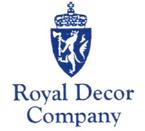





ORCHESTRA CIRCLE
$10,000+
Anonymous Donor
Joe & Marlene Borda
Margaret M. Dick Linda Ferens
Maurice & Betsy Joy
MAESTRO CIRCLE
$5,000 – $9,999
Augusto Bernardini
Crysberg Inc.
Charlotte & John Gates
Diane Kupchak Mary Thomas Dean & Audrey Throndsen
Don & Bonnie Waggoner
SYMPHONY CIRCLE
$2,500 – $4,999
Avrum Abramowitz
Janice Barone Sarah Jordan
David & JoAnne Kelch
Peter & Mary Jane Moeller
Richard & Charlotte Rahm
CONCERTO CIRCLE
$1,000 – $2,499
Anonymous Donor
Anonymous Donor
Steve & Donna Bell
John Canner
Bonita Carnes
Dennis R. Carney John Collins
David & Jeanette Colvin Mr. & Mrs. Joseph DeVuono
William & Judith Doran Carol Guglielm
Donald & Nancy Hickman
Janet Howell Phyllis Lachman
George & Carol Majestic Doris Martin
George Neal Darlene Pruett
Ken & Mary Shutts
Dr. & Mrs. Winfred Stringer
Richard & Sharon Williams OVERTURE CIRCLE
$500 – $999
Richard Allgaier
Katheryn Batman Michelle Boone Charlotte Conway Roger & Julie Cooper Ruth DiMare Richard Hoag Noel Kott
William & Sharron
Leonhirth
Robert & Sara McPhail Scott Sander
Norman Lee & Terri Schaffer
Paul & Dorian Schnirring
Joan Spires
Abbott Webber Anna Whipple
Keith & Randee Workowski
SUITE CIRCLE
$100 – $499
Bernie & Elizabeth Albrecht
Gene Armani
Donna Austin
Tim Barry Robert Becker
Jeff & Ursula Bergman
Frank & Linda Blews
Linda Boese
Carl & Doris Branson
Linda Casey
Todd Collins
Kenny & Elizabeth Constant Glenda Crandall
Thomas Davis Barbara Dipol
John & Bonnie Eckstein
Greg & Mary Feichtel
Jack & Nancy Fieldman
Mia Ford
William & Gail FraserGiacchi
Lisa French
Peter Fritz & Carol Mangan Fritz
Mary Ann Garback
Alan Geller
Greg & Carolynn Gilbert
Doris Goodwin
David & Kathleen Haviland
Dr. Bill Hole
Linda Holmes
Deborah Hurtt
Richard & Susan Jacobs
Richard & Charlene Kinder
Brad Koozman
Gregory & Bonnie Larson
Alma Macht
Eileen McCabe
James McQuiniff
Nick & Donna Meister
Thomas Murphy
Fritz & Debbie Neal
John Nickelson
Phillip Oliveira
Nancy Padden
Robert A. Phillips
Ron & Grace Ranger
Barbara Reynolds
John & Beverly Scott
Paul & Rita Segnatelli
Andrew Sloan
Rhoderic Soutar
Michael Spinelli
George Stenz Karen & Lowell Stockman
Tony & Joanne Sutylo
Donna Thompson
Roy & Jackie Ullrich
Richard & Grace Waller
Robert & Joan Waller
Shannon & Brandon Waters
Jeffrey Wheeler
Theresa R. White
Bob & Debbie Wilson
Sonya Wilt
Sunny & Roy Witt
Joseph & Ginger Wray Mary Yankowski
Andrea Ziccarelli
Joseph Zientara
K. L. Hoffman
Irene Hong-McAtee
Lora MacPherson
Joanne Michalski
Donald Mooty
Robert Muzzi Patrice Pastore
Geraldine Piscitelli
Marianne Reinhard
Sally Rowe
Erika Schaffer
Kathryn Sleeper
Joyce Smidt
Robert Smidt Jack & Maryann Swisher
C & H Van Benthuysen Donald & Nancy Walker Eric Williams
ARIA CIRCLE
Up to $99
Barbara Athanasiou
Kathryn Bates
Irene Coen
Katheen Eikhof Arthur Elwood
Susan Escobedo
Paul F. Gaecke
Kevin Gallagher Jordan Galvarino
Brenda & Bob Gold Valery Heyduk
Bill Barnes: Susan Escobedo
Fred Boyd: Frank & Janet Argenziano
Fred Boyd: Don & Janet Schiegel
Carolyn Johnson: Richard Johnson

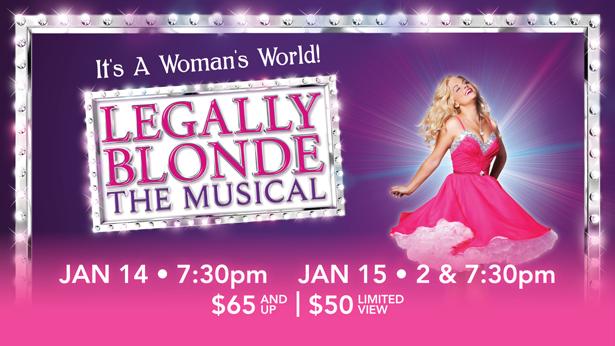


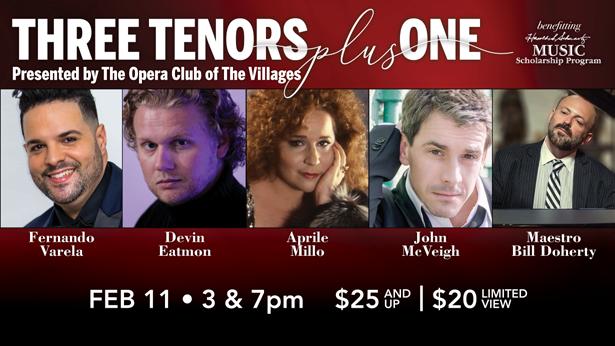


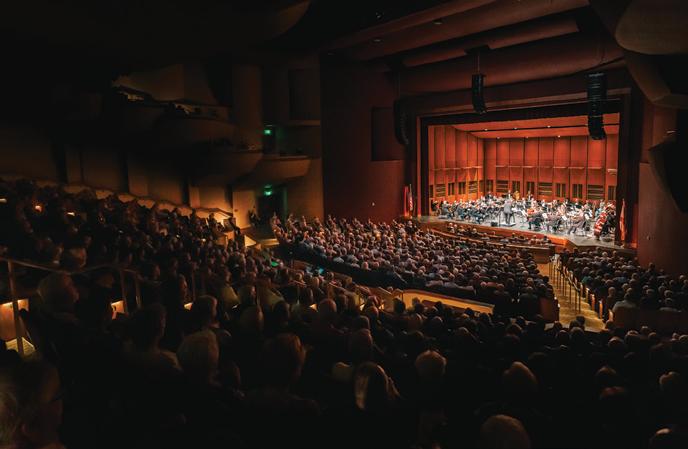
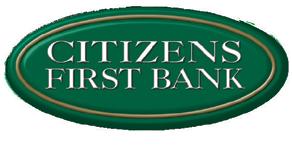


Whether or not I paid the cable bill.
Exact location of car keys.
Fig. 17 GREY MATTER


Neighbor’s daughter’s name.
Brain health. It’s the key to maintaining your independence for years to come and shouldn’t be ignored. That’s why Aviv Clinics focuses specifically on improving brain function later in life. From enhanced memory, to increased energy and stamina, our multi-faceted program is designed to improve how you age.
Let’s talk about what matters: 844-399-2848 ~ aviv-clinics.com
Aviv Clinics Brain Performance